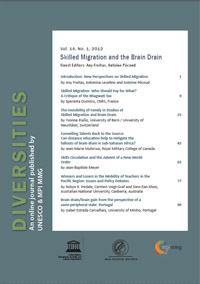Skills Circulation and the Advent of a New World Order
by Jean-Baptiste Meyer
Is the knowledge world organized differently today with respect to yesterday? At the world level, observers used to highlight the asymmetry between the North and the South, which would shape the unidirectional flows of competence from the former to the latter. The ‘center’ would attract the brains and human resources in science and technology. Today, by contrast, one tends to stress the greater complexity of flows’ directions and the ‘circulation’ of brains rather than their ‘drain’. Some see this trend as making migration contribute to development. Others, in a more skeptical way, argue that the core features of the world have not changed.
This article does not aim at identifying which position is right, but rather at discussing the core arguments in this debate, on the basis of empirical evidence and of the interpretations it can be associated with. The first part analyses the evolution of data over the last decade. The role of diasporas is the object of the part 2, which demonstrates the potential, but not automatic, link between migrants and their country of origin. The third part connects the major transformations of the scientific and technological world with current and future mobility trends; if flows are less unidirectional than before, the social and political conditions in which they take place remains uncertain. In conclusion, the paper argues that the ‘circulation’ approach to migration, that is now at least a decade old, is going through a new phase and must therefore be reassessed.
Suggested bibliographic reference for this article:
Meyer, J.-B. (2012). Skills Circulation and the Advent of a New World Order. Diversities, 14(1), 63-75. Retrieved [todaysdate] from https://newdiversities.mmg.mpg.de/?page_id=2040
|
